
Think back to the last time you registered for a webinar or downloaded an e-book or whitepaper. Had you been actively searching for material around its themes? Was it recommended to you by a colleague? Or were you roaming the web and a business ad persuaded you to register or download right there in the moment?
If that last scenario applies, you were enticed by the company’s direct response marketing—a form of advertising designed specifically to elicit an immediate response from a prospect. Such tactics may not pull at the heartstrings quite like big-budget brand-building initiatives—the ones you might see illuminating Times Square or running throughout the Olympics—yet for many advertisers, they are the bread and butter of growth and nurture campaign programs. When rolled out correctly, direct response marketing can be a highly effective means of quickly generating leads and guiding target audiences through the sales funnel.
So, what are the components of direct response marketing? What benefits does it offer brands? On what channels is it best to deploy? And what are some examples of direct response marketing and best practices advertisers can apply to their campaigns? Read on for answers to all these questions, and more!
Consumers today want trustworthiness, personalization, and more control throughout their buying journey. They like to independently navigate their way to a purchase decision (particularly those in B2B) and expect brands to educate and inspire them on their journey rather than simply market their commodities and value propositions.
Of course, direct response marketing can (and often does) directly solicit audiences to make a purchase, but a large part of this tactic is getting prospects to engage with your brand in a way that feels less aggressive and more organic. Some common examples of direct actions that marketers can inspire—beyond promoting specific products or services—include registering for an event, downloading a piece of content, visiting a website or specific webpage, reading a blog post or press release, signing up for an educational program, requesting a product demo, listening to a podcast, or subscribing to a newsletter. Ultimately, a direct response campaign is the advertising equivalent of starting a meaningful conversation with your potential customers and setting up your brand to drive more conversions in the long-term.
There are occasions when the boundaries of direct response marketing become blurred and overlap into the realm of traditional brand-building. Indeed, both look to foster engagement, build brand affinity, and strengthen brand reputation. The major distinguishing feature between the two, though, is prioritization—direct response ads aim to drive an instant action with a focus on generating quick results. Typically, they feature three core components:
Direct response marketing works best when you make one specific offer to prospects. In other words, you should be driving them to download one e-book, register for one webinar, sign up for one educational program, buy one product... You get the idea.
The key here (as with all marketing, really!) is to know your target audience—to fix your offer on a buyer persona and then craft something that will appeal to their wants and needs. 72% of consumers expect businesses they buy from to recognize them as individuals, and 78% are more likely to repurchase having received tailored communications. In essence, creating personalized experiences matters now more than ever before. Consumers are demanding them, and they respond positively when brands demonstrate their investment in developing a relationship—not just getting the transaction.
Whether it’s a clever tagline or something clear and direct, creating a compelling message that really sells the offer is critical to the success of any direct response ad. Advertisers generally have just a few seconds to attract and engage consumers, so it’s important the language is equal parts persuasive and straightforward in order to encourage them to react immediately, and to elicit the desired action.
The piece that brings everything home: the CTA. This is the directive you’re giving the prospect after having (hopefully) made the case for why they should engage with you. Above all, a CTA should be easy to understand and readily accessible. Aside from that, there are numerous ways to optimize and iterate on your CTA, from testing different action-oriented text options to experimenting with color and playing around with button shapes. It can be all too easy to get stuck with the status quo when it comes to CTAs, but by staying abreast of best practices and trying out new ideas, you can better position yourself to drive higher conversions.
Since direct response ads have dedicated correlated actions, it’s simple to track the engagement you’ve generated from each campaign. The resulting data can empower you with a sense of how successful it was—insights that can help you understand the effectiveness of your copy and the attractiveness of your offer in terms of delivering value and inciting action.
For example, let’s say you’re running a promotion for your new whitepaper on Facebook, LinkedIn, and Google. Deploy a simple split test of the same ad displayed in three places. Either by running promotional codes or QR codes on the front end, implementing UTM codes on the back end, or setting up a corresponding landing page, you can measure exactly which media is prompting the most impressions and conversions in real time. From there, you can glean what’s working and what’s not, and then either quickly optimize (or remove) ads that aren’t meeting your ROI goals.
With Google’s plans to sunset third-party cookies edging ever nearer, and with Apple allowing users to opt out of app tracking starting back with iOS 14, so much importance lies in the hands of first-party data. The transparent, opt-in nature of direct response ads means that brands can quickly amass a high-value, high-quality first-party data stockpile with minimal privacy issues.
The benefits of adopting such tactics are clear: Retail brands leveraging first-party data in advanced marketing activations have shown to achieve a 3-5% revenue and profit uplift. With a treasure trove of first-party data in your arsenal, you have the key to future-proofing your marketing performance for the cookieless world.
After a prospect has made the decision to respond to your call to action, the door is open to follow up with that person and foster a meaningful relationship built around intentional touchpoints. Having established a direct line of communication, you can continue your dialogue by providing relevant content or other products and services they might find valuable. Cross-sells, upsells, drip campaigns, free offers, discounts—these are just some of the tools you can embrace to turn a prospect into a lifelong customer and a true brand advocate.
When building direct response advertising campaigns, marketing organizations must first identify the channels where they can amplify their reach and resonance, then work around the nuances of each in terms of execution best practices. Here’s a breakdown of the most popular for direct response ads:
Digital display ads are banner or rich media ads incorporating text, images, video, and/or audio that appear in pre-determined sections of a website or social media platform—be that a sidebar, a footer, a header, or punctuating a scrollable feed. The most impactful direct response display ads will generally feature dynamic rich media elements with concise copy and a short CTA that work together to create a sense of urgency.
Google Ads and Microsoft/Bing Ads represent an attractive option for brands setting up direct response marketing campaigns as they empower media buyers to reach highly specific market segments through a wide range of granular targeting features. And because the ads appear when a prospect is searching for something related to the ad, it’s that much easier to grab their attention and earn a click.
Today, in the US alone, there are approximately 178 million monthly users on Facebook, 133.5 million on Instagram, and 102.4 million on TikTok—with the likes of Pinterest, Snapchat, LinkedIn, Twitter, and Reddit all close behind. Given the sheer size of these audiences (not to mention the time those people spend on social), it’s easy to see why social channels are among the most powerful platforms for direct response ads. Much like in search advertising, social media advertising offers myriad possibilities when it comes to audience segmentation, enabling media buyers to get more personalized with their promotions.
Relatively inexpensive to create, design, and test, emails allow marketers to communicate on an individual level with target audiences who have already submitted their contact information somewhere along their buying journey. Direct response email campaigns can draw attention to anything and everything: flash sales, new reports, product or service discounts, upcoming events, items sitting in an abandoned cart, and more.
The case for including connected TV in your direct response strategy is compelling, especially given that more than two-thirds of the US population are now monthly CTV users. The fact that CTV combines the targeting capabilities of digital advertising with the lean-back experience of traditional TV certainly adds to the appeal. Linear TV, too, is still a good option. In fact, during the Super Bowl in 2022, Coinbase ran one of the most notorious pieces of direct response marketing in history: a 60-second video ad featuring nothing but a bouncing QR code that led scanners to the app’s landing page offering bitcoin giveaways. It caused a huge stir across the advertising industry.
Mobile messaging has been gaining popularity, particularly over the last couple of years as brands have been scrambling to meet consumers at home on their own terms. There are many benefits that come with adopting SMS marketing, but as with email marketing, prospects need to have previously signed up to receive communication from you and you must adhere to many privacy practices or risk running afoul of both regulators and spam-weary consumers.
It may be old-fashioned, but direct mail certainly still has its place in an omnichannel direct response strategy. With our digital footprint hitting overdrive and our email inboxes overflowing, direct mail presents an opportunity for marketers to deliver something personal and tangible—an alternative for prospects suffering from screen overload. Brochures, catalogs, coupons, digests, or newsletters are the most traditional forms of direct mail, but brands can align them with modern advertising techniques (such as QR codes) to help recipients transition seamlessly from the physical world into digital.
Despite the immediacy with which direct response marketing can generate results, it’s important to remember the tactic should be part of your long game. For instance, if all your campaigns are centered around selling your products or services, that’s unlikely to fly with prospective consumers—first, they need to know who you are. The proof? A whopping 82% of customers say they prefer a brand’s values to align with their own, with many reporting they’ll avoid brands they don’t feel a connection to. To put this into practice, consider breaking up your product and service offerings with lighter calls to action: This could look like inviting your audience to read your latest blog post or to sign up for your newsletter. This is all part of building trust with consumers.
Creativity is key to engaging audiences and driving action, and one of the ways brands can strive to stand out is by incorporating video into their ads. A study by Facebook and Analytic Partners found that one advertiser who applied video advertising best practices to a campaign saw a 5.3x lift in purchase intent, a 75% uplift to margin, and a 3.8x increase in weekly revenue. The draw of video essentially lies in its ability to tell a quick story in a short span of time and impart more information than a standalone image ever could. For businesses looking to level up their direct response game, including some video alongside first-rate product shots or other visuals could make all the difference in persuading audiences to click and convert.
With research revealing that companies excelling in personalization generate 40% more revenue than average players, the importance of getting granular with your audience segmentation and targeting cannot be understated. Today there is very real pressure on brands to deliver tailored offerings and outreach that meets individuals in their moment. Those who get this wrong may see brand loyalty wane, while those who get it right can set themselves up to drive repeat engagement over time. By generating relevant, recurring interactions, you can garner more data that can be used to design ever more personalized experiences—you’re ultimately creating a flywheel effect that fosters strong, long-term customer lifetime value. Examples of personalization in action can be something as simple as triggering product or service recommendations or offering customized discounts based on past purchase behavior.
Consumers have long looked to friends and family for product and service recommendations. Indeed, word of mouth marketing drives $6 trillion in annual consumer spending, which equates to 13% of consumer sales. For this reason, one of the best outlets for direct response marketing is a referral program—say, running a campaign asking current customers to refer your brand or product in exchange for a gift, discount, or any other perk that aligns with your business model.
Now that we’ve defined direct response marketing, explored its benefits, and reviewed some valuable tips and best practices, want to see it in action? The examples below illustrate strong offers, messages, and CTAs—plus trackable methods for collecting first-party data—across multiple media options.

Audible attracts new subscribers with a specific offer, a clear call to action, and creative featuring one of their most popular audiobooks—one that is likely already top-of-mind for Audible’s target audience.

UnitedHealthcare knows how competitive (and confusing) Medicare can be. This ad copy encourages prospects to review Medicare plan coverage and costs, references the annual enrollment period to establish urgency, addresses relevant considerations like “health and lifestyle needs,” and notes that the resource is free to download.
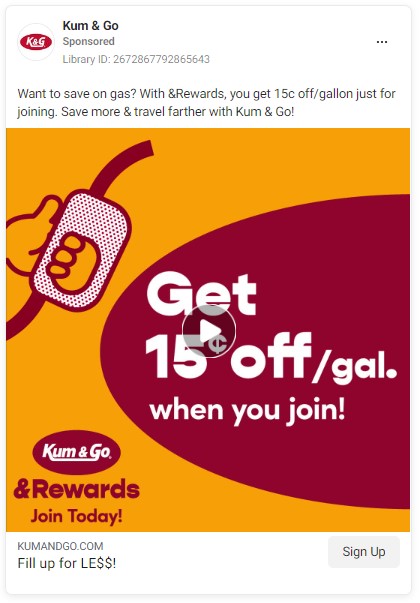
Convenience store chain Kum & Go generates loyalty program enrollment by offering fuel discounts upon signup. Both the ad copy and the animated graphic highlight those savings, and the calls to action to “Join Today” and “Sign Up” couldn’t be clearer.
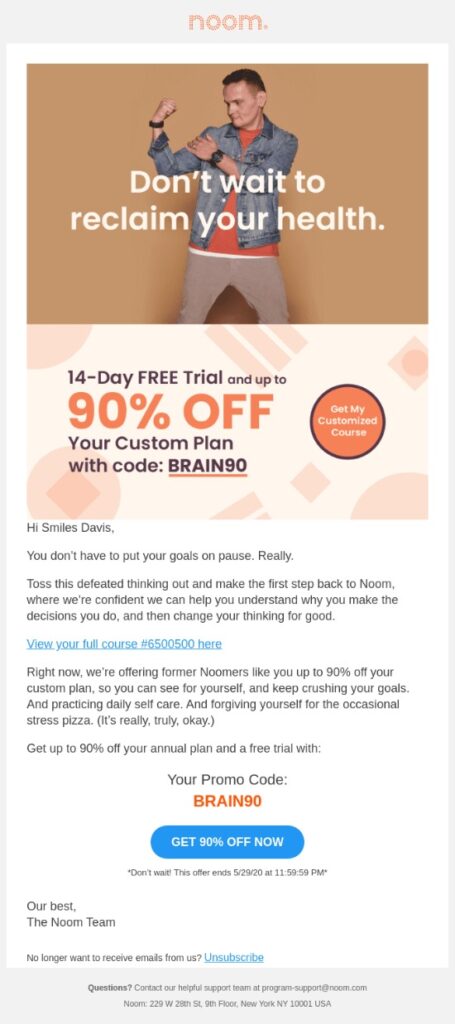
Weight-loss program Noom pulled no punches with this email, including a tried-and-true “don’t wait” headline for urgency, a personalized greeting, two offers for maximum value, a promo code for trackability, and a CTA to redeem before the expiration date listed below the button.
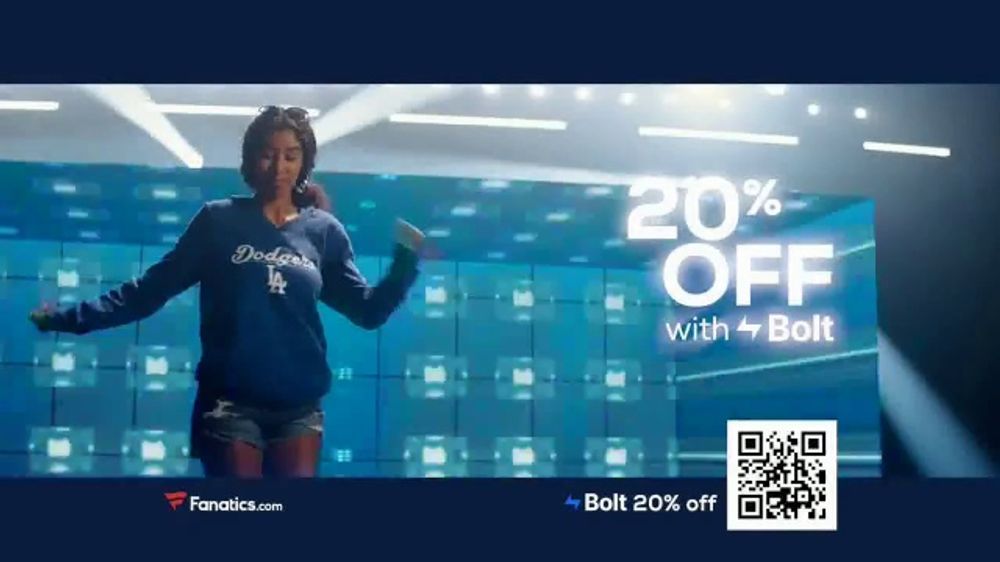
Who says you can’t get a response directly from a TV spot? Fanatics not only plays up the sports vibe by featuring athletes in their gear, but also provides a percentage-off discount and a QR code to make the shopping experience more seamless from the TV screen to the mobile device.
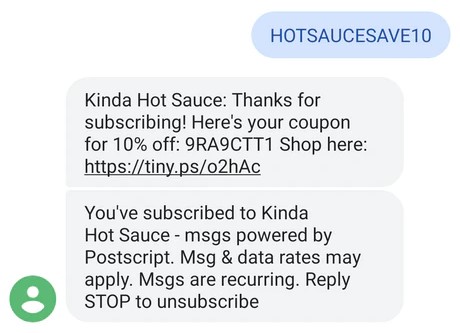
Kinda Hot Sauce leverages the trackability and convention of an SMS short code and keyword to kick off the subscription process, the enticement of a coupon via a redemption code (which is attributable back to this campaign), and the efficiency of an autoresponder to follow up with new members.
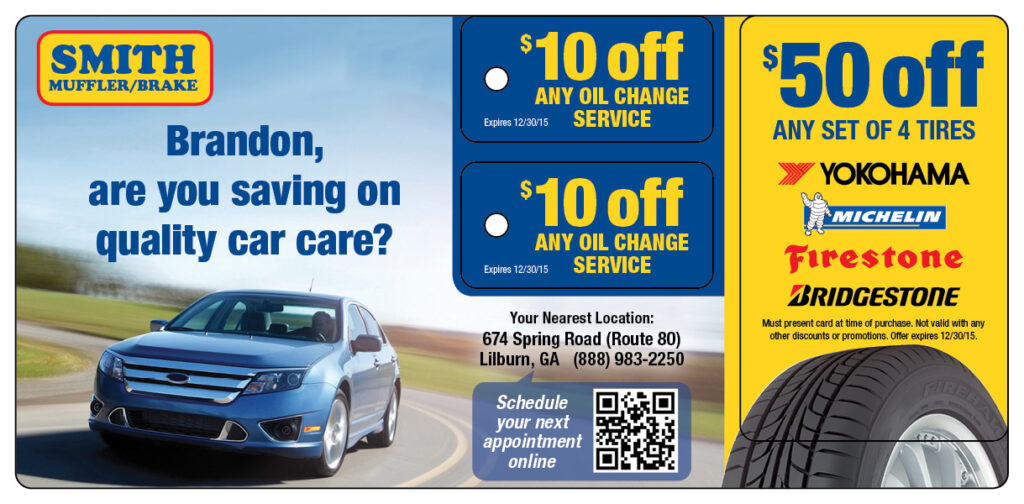
This local auto shop makes the most of its direct mail piece by personalizing the greeting, including three detachable coupons for in-store savings, and displaying a QR code so recipients can easily schedule an appointment using their mobile phones.
With competition for customers growing tougher by the day and media complexity ever-increasing, brands need to be savvy with their marketing efforts. Direct response ads can be a powerful supplement to your brand-building campaigns and help you nurture as many prospects as possible through the funnel. After all, only a tiny percentage of consumers are ever ready to buy at any given time. Direct response marketing can give audiences ample opportunities to get to know who you are, what you’re about, and what you can do for them.
—
Want one last example of direct response marketing? Here you go: The Basis Scout newsletter team tracks down the best articles, POVs, and reports from across the digital marketing landscape each month. Sign up today to get all that content delivered straight to your inbox each month!